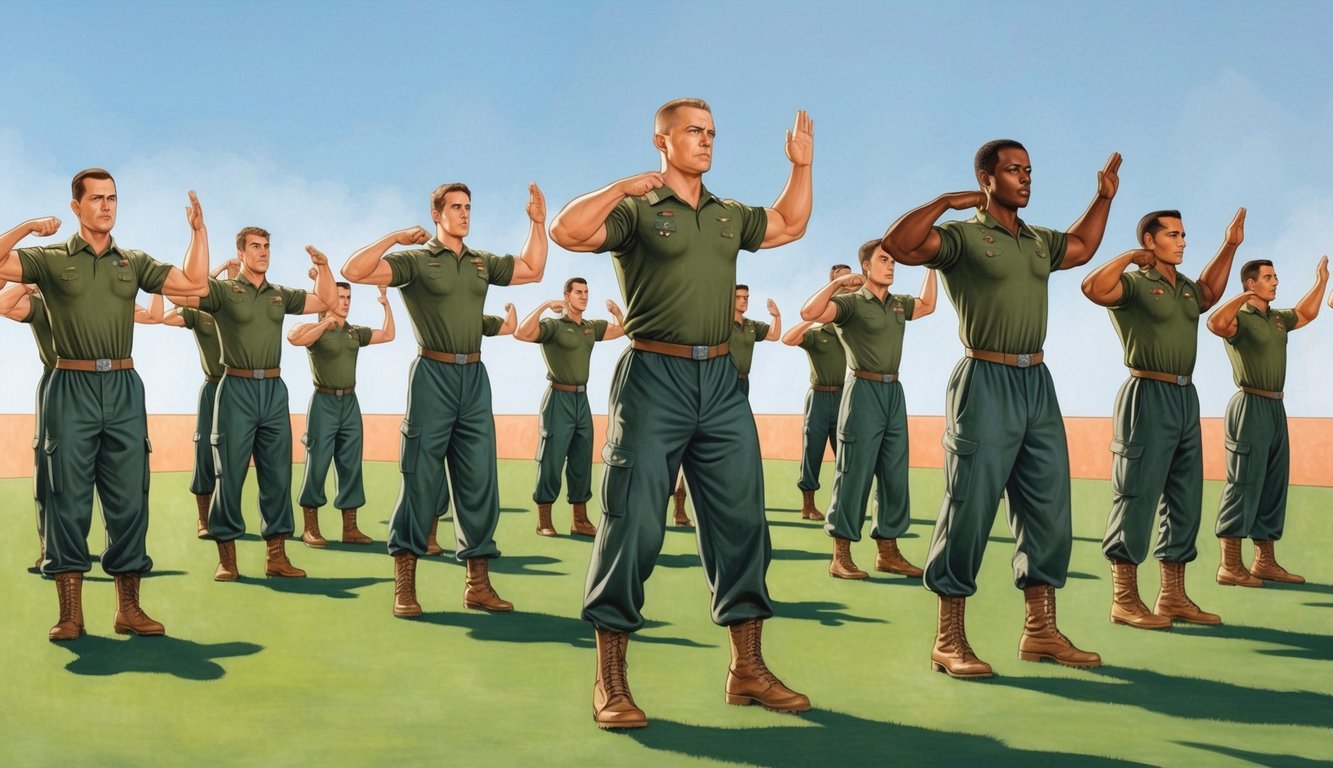“`xml
The commands used in Army Physical Readiness Training (PRT) are essential for military fitness drills, directing soldiers through organized exercises and formations.
These commands are vital for ensuring accuracy and structure during training sessions, fostering both physical readiness and discipline.
Becoming proficient in Army PRT commands enhances your ability to interpret instructions and perform movements accurately, skills that are fundamental for any soldier.
While grasping these commands may seem daunting initially, they will soon become second nature through consistent practice.
Commands like “Extend to the Left, March” and “Next Rank, Move Forward” are specifically crafted to uphold formation integrity and facilitate the progression of drills.
As you grow accustomed to these commands, you’ll notice a marked improvement in the efficiency and effectiveness of your training sessions.
Key Takeaways
- Army PRT commands are vital for improving physical readiness and instilling discipline through structured exercises.
- Proficiency in these commands enhances your capability to follow instructions and execute movements with precision.
- Regular practice of PRT drills contributes to more productive and efficient training sessions.
Finding The Rhythm: Understanding PRT Commands
Army Physical Readiness Training (PRT) commands are crucial for coordinating group exercises, ensuring that form, timing, and discipline are maintained throughout workouts.
Let’s delve into the primary elements of PRT commands and formations.
Language of Discipline
PRT commands employ concise and clear language to guide soldiers’ actions.
Commands such as “Position of Attention, Move” and “Extend to the Left, March” facilitate quick understanding and prompt execution.
Most commands consist of two parts: a preparatory command indicating the action and an execution command signaling when to perform it.
For example, in “Left, Face,” “left” prepares you for the movement while “face” instructs you to carry it out.
Focus on listening attentively and responding swiftly to these directives.
Your capacity to follow commands accurately will enhance both performance and team cohesion.
Formation Basics for PRT
PRT typically adopts an extended rectangular configuration for exercises, allowing for appropriate spacing and instructor visibility.
To achieve formation, you will often hear “Extend to the Left, March.”
This setup requires that you maintain an arm’s length distance from your fellow soldiers.
The soldiers on the right flank remain in position, arms extended sideways at shoulder level, while others move left at double time and then face forward with arms extended.
Commands like “From Front to Rear, Count Off” help organize the formation, and “Assemble to the Right, March” facilitates regrouping post-exercise.
It’s essential to be aware of your position and ensure appropriate spacing throughout the training session.
Initial Adaptations
Starting PRT may initially feel overwhelming with the array of commands and formations.
It’s perfectly normal to feel disoriented at first.
Concentrate on observing others and following their guidance until you grow more comfortable.
Key reminders include:
- Keep proper posture consistently.
- Stay attentive for commands.
- Execute movements promptly and decisively as instructed.
- Maintain the correct spacing in formations.
With practice, you will cultivate muscle memory for the frequently used commands and movements, enhancing your adaptability for your military career.
Remember, everyone begins as a novice—regularity and focus on details will accelerate your progress.
Preparing for Success: PRT Preparation Drill
The Preparation Drill is a key aspect of Army Physical Readiness Training (PRT), setting the stage for more vigorous exercises while minimizing injury risk.
Efficient Warm-Up Techniques
Begin with the Bend and Reach to loosen your lower back and hamstrings.
Progress to the Rear Lunge to stretch your hip flexors and quadriceps.
The High Jumper will elevate your heart rate in addition to working your legs and core.
Following that, perform the Rower to engage your upper body and core muscles.
The Squat Bender targets your lower body while enhancing flexibility.
The Windmill promotes rotational movement and core stability.
Next, execute the Forward Lunge to enhance balance and leg strength, followed by the Prone Row to activate your back muscles.
Conclude with the Overhead Arm Pull and Extend and Flex to stretch the upper body.
Physical Tuning Before the Core
Make sure to do 5-10 reps of each exercise at a moderate pace, allowing your muscles to warm up gradually and increasing blood flow to your joints.
Concentrate on proper form over speed.
Remember to take deep breaths for muscle oxygenation, and be mindful of how your body feels, adjusting as necessary.
The preparation drill enhances flexibility, strength, and cardiovascular endurance, priming your body for demanding activities during your PRT session.
A thorough warm-up can significantly lower your risk of injury during training.
Take your time with each exercise to maximize its benefits.
Core Conditioning: Army PRT Activities
Army Physical Readiness Training (PRT) is designed to develop a strong core, enhancing overall fitness and combat readiness.
These exercises target your abdominal muscles, lower back, and obliques, which contribute to increased stability and power.
Strength and Endurance Building
The Four for the Core (4C) exercise set is a crucial part of Army PRT.
You will engage in bent-leg body twists, single-leg over, back bridges, and quadraplexes for 60 seconds each to strengthen your core and improve endurance.
To complement the 4C, you’ll perform the Rower Squat Bender, targeting multiple muscle groups to enhance core strength and leg power.
Initiate from a squat position, extend your body into a “V” shape, and then return to the squat.
Push-ups form another critical element of Army PRT, working the chest and arms while also activating your core muscles.
Strive to maintain correct form throughout the exercise for maximum effectiveness.
Developing Mobility and Agility
Movement Drill 1 is significant for enhancing your mobility and agility, incorporating verticals, laterals, and shuttle sprints.
These movements improve your ability to change direction swiftly and move efficiently in various planes of motion.
The Bend and Reach exercise increases flexibility in your hamstrings and lower back while engaging your core.
Stand shoulder-width apart, bending forward to reach for your toes.
To boost agility further, practice the Power Jump by starting in a squat position and explosively jumping up while swinging your arms overhead.
This activity fosters your capacity to generate core and lower body power.
Maintain proper form during all exercises to minimize injury risks and maximize core strength, mobility, and overall physical readiness.
Methodology Behind PRT Phases
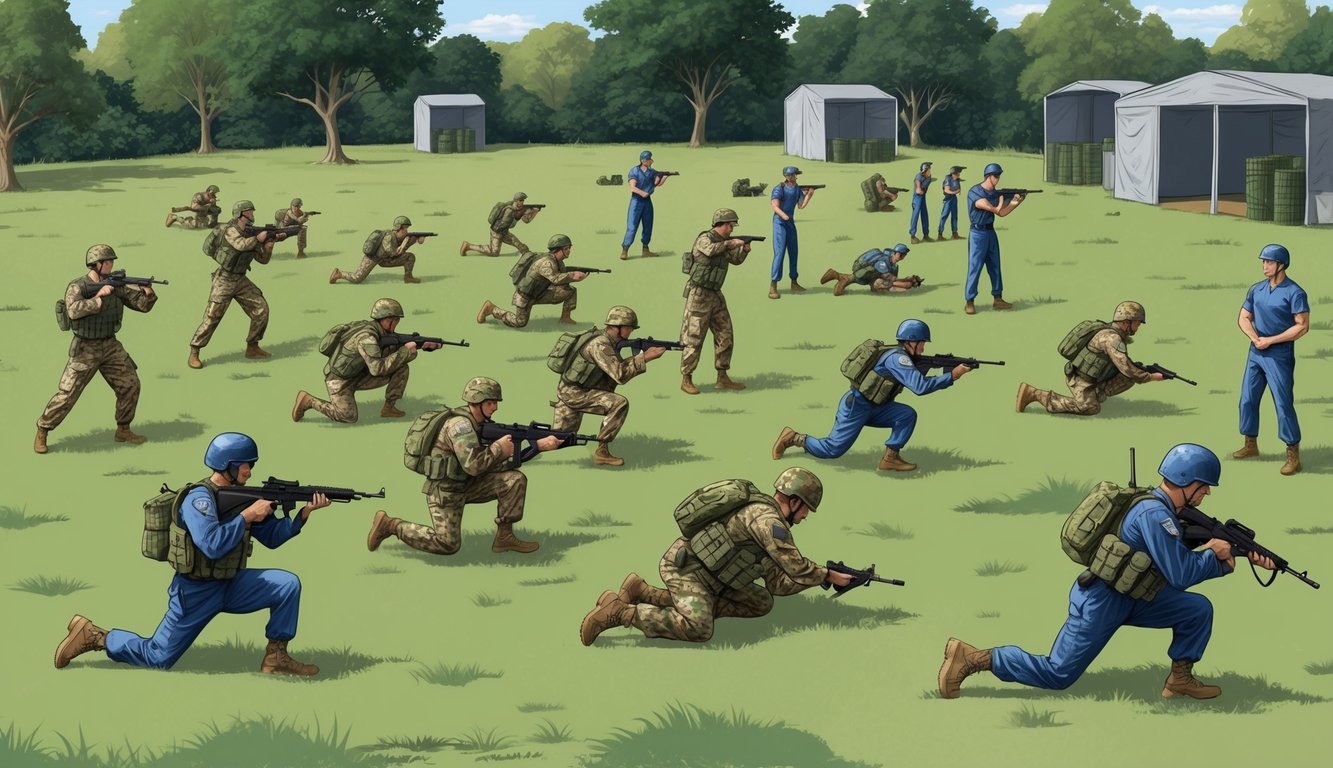
The Army’s Physical Readiness Training (PRT) program is divided into distinct phases, each serving different goals and soldier needs while progressively increasing strength, endurance, and resilience—all while minimizing the risk of injury.
Toughening Phase Insights
The toughening phase concentrates on building a strong fitness foundation, typically lasting 8-10 weeks, and is especially vital for new recruits.
You will begin with basic exercises, gradually escalating the intensity.
Key components include:
- Daily sessions lasting 60-90 minutes.
- An emphasis on correct form and technique.
- Introduction to fundamental movements such as push-ups, sit-ups, and running.
This phase aids in adjusting to the physical demands of military life, incorporating the recovery drill that is critical for preventing injuries and promoting muscle recovery.
Sustaining Phase: Maintaining Readiness
After completing the toughening phase, soldiers transition to the sustaining phase, a constant commitment throughout military service, aimed at maintaining and enhancing physical fitness levels.
Characteristics of the sustaining phase include:
- Increased exercise variety and intensity.
- 4-5 sessions per week, each lasting 60-90 minutes.
- Integration of strength, endurance, and mobility training.
You’ll experience a broader array of exercises and activities.
The aim is to keep you combat-ready and capable of effectively performing your military occupational specialty (MOS) tasks.
Reconditioning: Recovery and Progress
If you are recovering from an injury or returning from extended leave, you will enter the reconditioning phase, crucial for safely regaining your fitness levels.
Key elements of reconditioning include:
- Gradual reintroduction of physical activity.
- Focus on form and technique to prevent re-injury.
- Tailored programs based on your specific injury or condition.
During this phase, collaboration with medical professionals and your unit’s fitness leaders is essential.
They will guide you through appropriate exercises and track your progress, aiming to return you to full duty status safely and effectively.
Leading the Charge: Roles in PRT
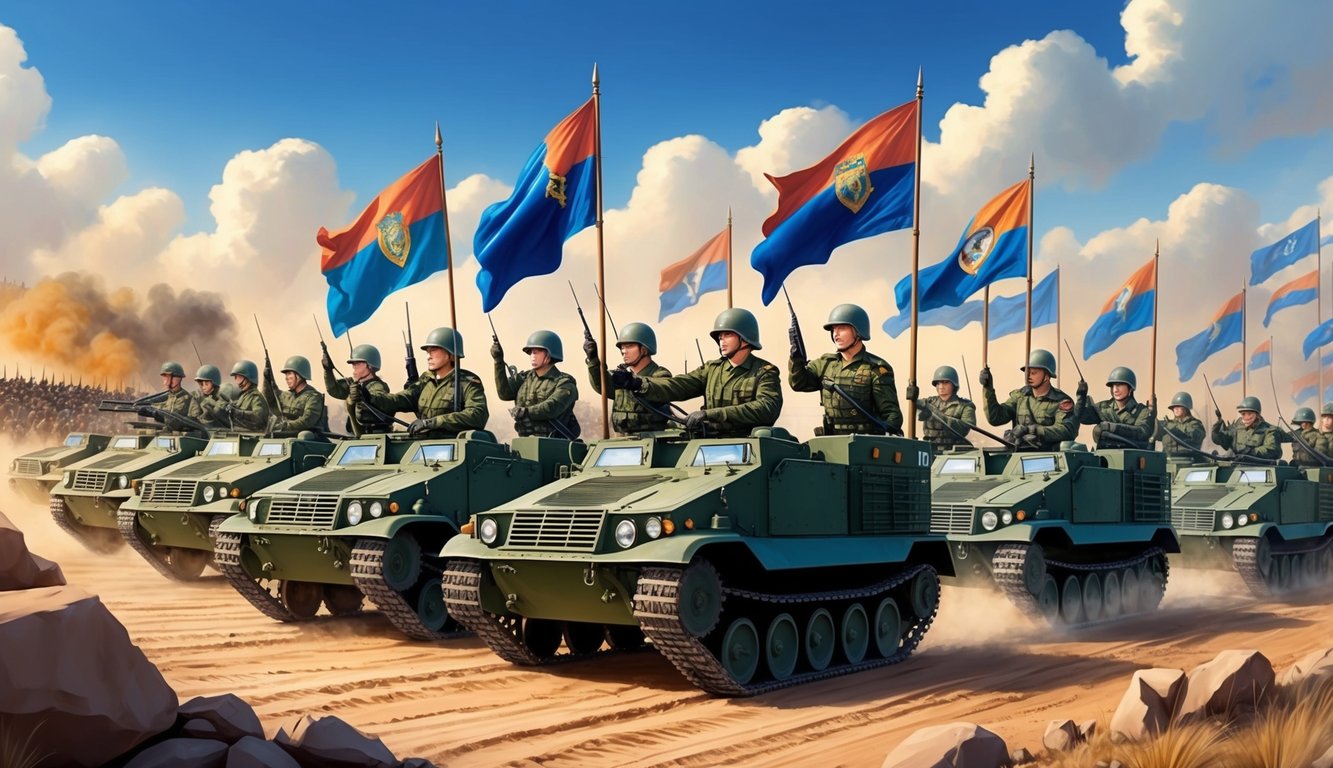
Army Physical Readiness Training (PRT) relies heavily on effective leadership and organization.
Well-executed commands and formation management are essential for successful training.
Responsibilities of PRT Leaders
As a PRT leader, your duties include planning, executing, and evaluating training sessions while ensuring safety, enforcing discipline, and motivating soldiers throughout the exercises.
Your responsibilities also entail demonstrating proper form, correcting mistakes, and adapting workouts to fit various fitness levels.
Mastery of the commands is essential, as you will need to deliver them clearly and with confidence.
Timing your commands to keep the group synchronized is crucial.
Your enthusiasm and energy can significantly influence the troops’ performance.
Organization and Commands in Action
In leading PRT, employing specific commands is key to organizing and directing the formation.
Start by instructing soldiers to “Fall In” and “Count Off,” with even numbers asked to “Uncover” to create room for movement.
Your command of “Extend to the Left, MARCH” initiates the extended rectangular formation, where the right flank remains stationary with arms extended, while others move left rapidly, allowing for optimal spacing during exercises.
When leading exercises, utilize preparatory commands like “The Jumping Jack,” followed by the execution command “BEGIN.”
Maintain a consistent rhythm, counting “1, 2, 3, ONE” to keep pace.
Your clear, authoritative voice will help soldiers maintain focus and motivation throughout the session.
Physical and Performance Assessments
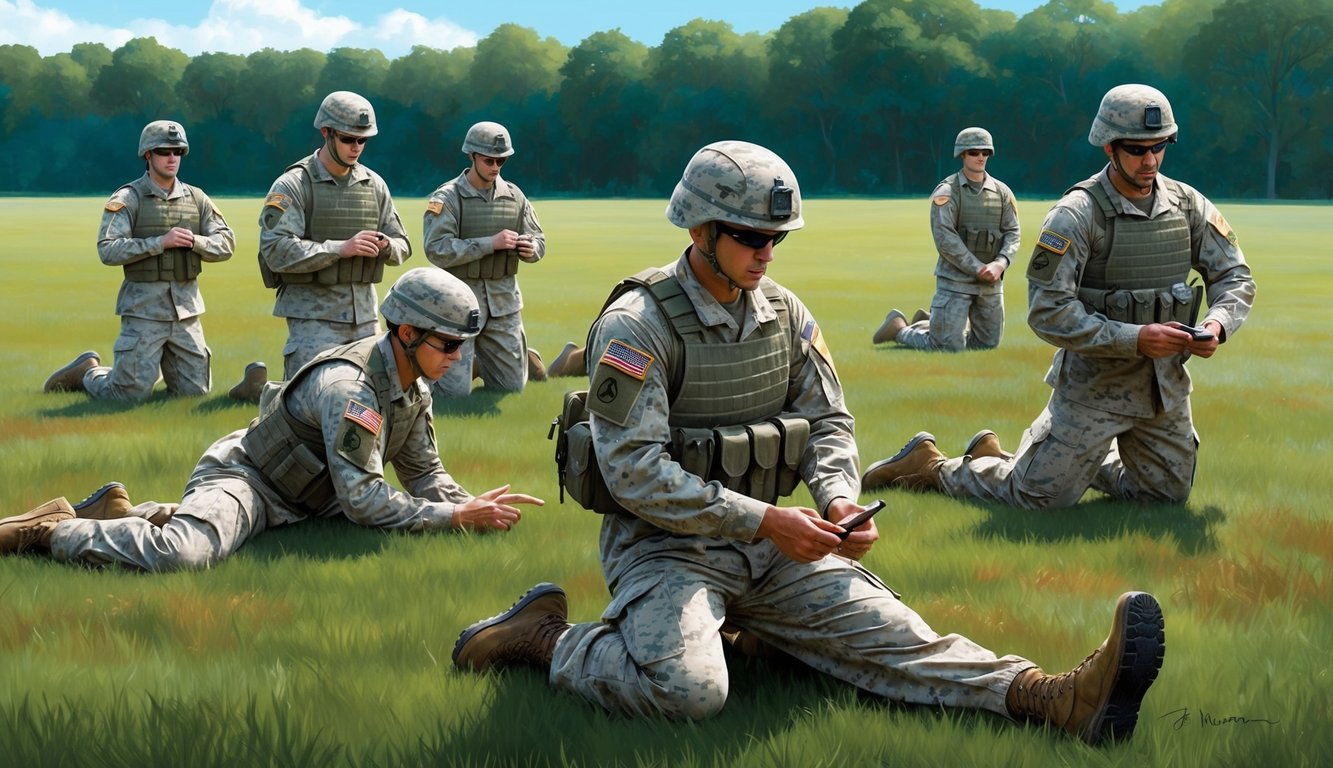
The U.S. Army employs various tests and evaluations to assess soldiers’ physical readiness and combat fitness.
These assessments ensure troops are equipped to meet the challenges of military service.
Army Physical Fitness Test (APFT)
The APFT has been a long-standing component of Army fitness assessment.
It includes three events:
- Push-ups (2 minutes)
- Sit-ups (2 minutes)
- 2-mile run
Performance is scored based on age and gender, with a minimum standard required for passing each event.
This test usually occurs on Mondays to allow ample recovery for optimal performance.
Maintaining proper form is essential.
For push-ups, ensure your body remains straight while lowering your chest to the ground; in sit-ups, interlock your fingers behind your head and bring your elbows to your knees.
Army Combat Fitness Test (ACFT) Components
The ACFT provides a more extensive evaluation of physical capabilities, comprising six events:
- 3-Repetition Maximum Deadlift
- Standing Power Throw
- Hand-Release Push-Ups
- Sprint-Drag-Carry
- Leg Tuck or Plank
- 2-Mile Run
This assessment targets various muscle groups, including hamstrings, glutes, quadriceps, shoulders, and obliques, and it aims to better reflect the physical demands encountered in combat scenarios.
Monitoring and Tracking Progress
Regular fitness assessments are crucial for improvement.
Keep a record of training sessions and test results to identify which areas require more focus as you track your progress over time.
Set achievable goals for each component of the APFT or ACFT, gradually increasing workout intensity and duration.
Consistency is vital for achieving results.
Consider using fitness apps or wearable technology to monitor heart rate, distance, and other metrics during training, which can help you refine your workout strategies and avoid overtraining.
Nutrition for Peak Physical Readiness
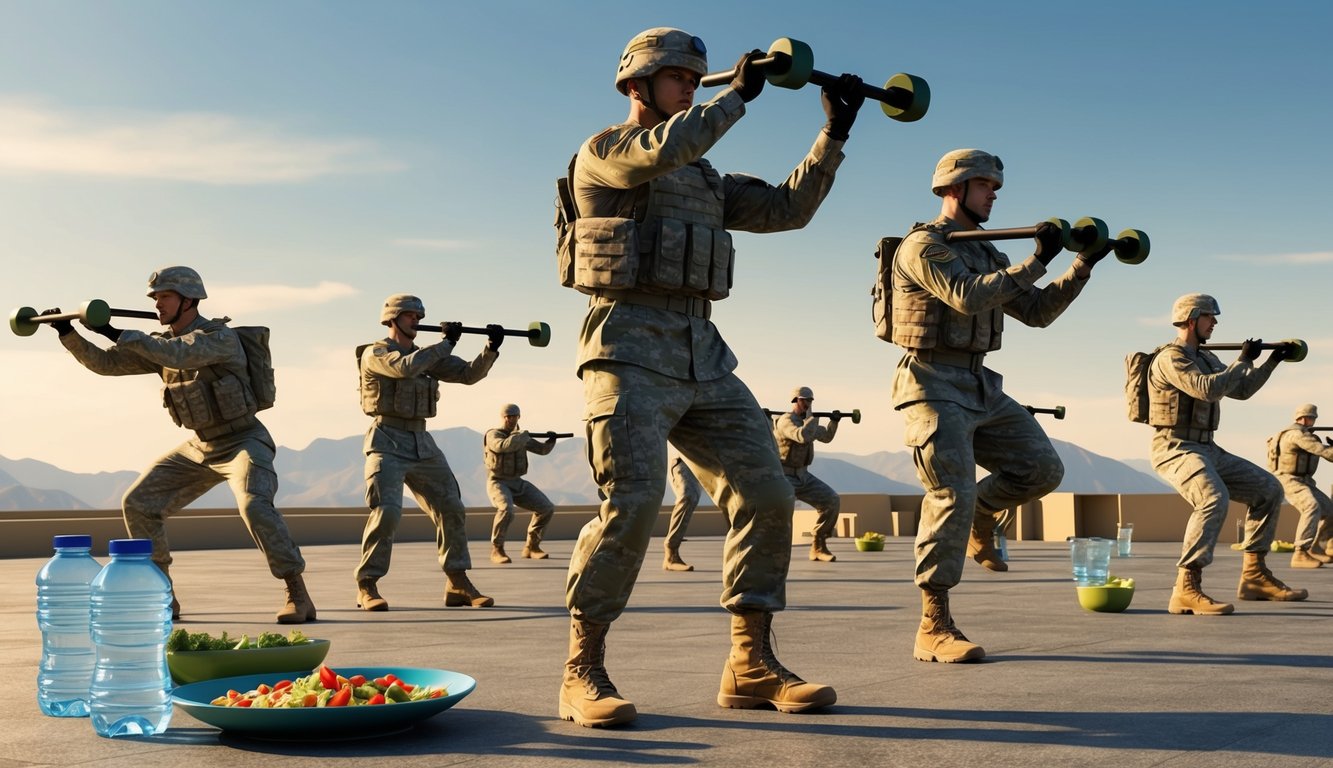
Proper nutrition is fundamental to achieving peak physical readiness in Army PRT, ensuring that you fuel your body with the right nutrients to perform optimally during training and missions.
Begin by prioritizing lean proteins such as chicken, fish, and lean beef to aid muscle repair and growth following strenuous workouts.
Aim for approximately 1.2-1.6 grams of protein per kilogram of body weight each day.
Complex carbohydrates serve as your primary energy source.
Incorporate whole grains, fruits, and vegetables into your diet for sustained energy throughout long training sessions and to replenish glycogen stores.
Include healthy fats, such as those found in avocados, nuts, and olive oil, which promote hormone production and enhance nutrient absorption.
Staying hydrated is paramount.
Consistently drink water throughout the day, not just during exercise; a common guideline is to drink half your body weight in ounces of water daily.
Consulting with a certified nutritionist to create a tailored meal plan can help optimize your diet according to your training needs and goals.
Timing your meals effectively is important—consume a balanced meal 2-3 hours before training and a protein-rich snack within 30 minutes post-exercise for proper recovery support.
Beyond the Drills: PRT and Lifestyle
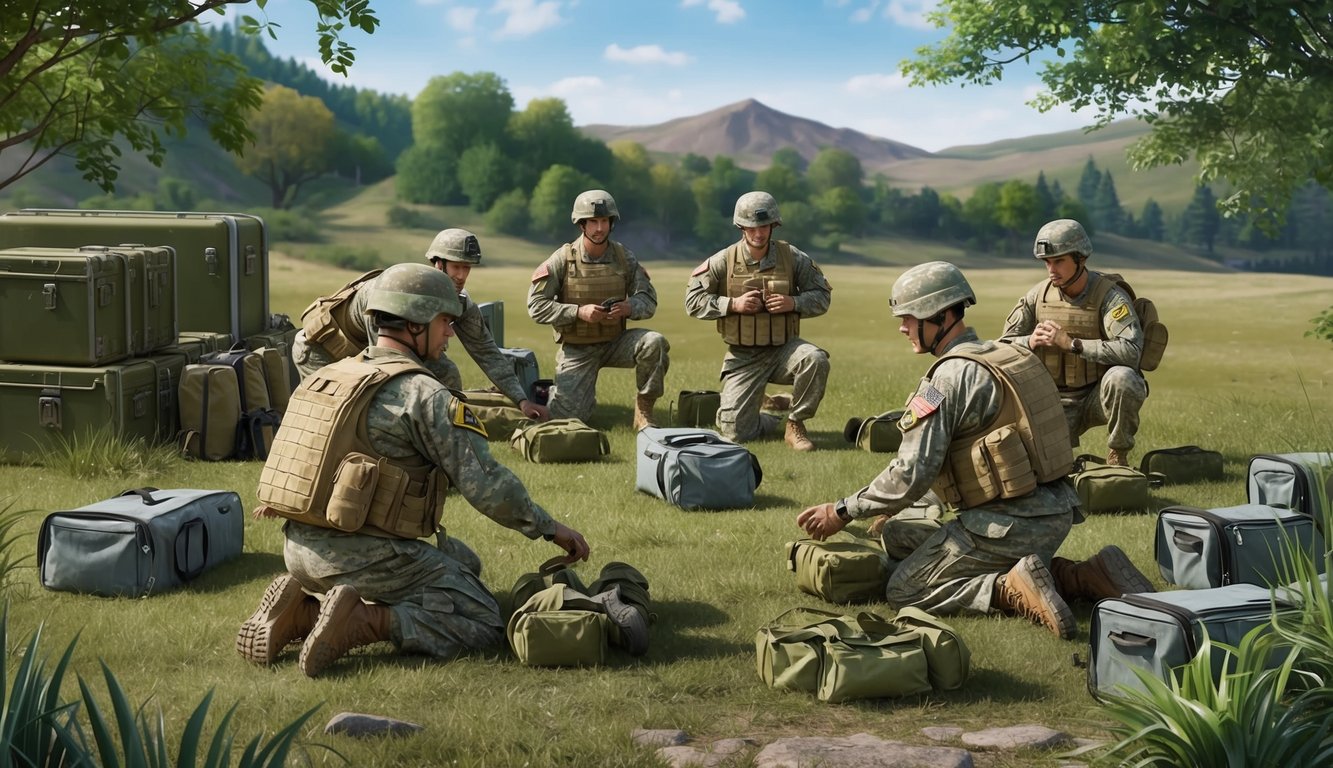
Army Physical Readiness Training (PRT) extends beyond merely following commands during practice sessions; it embodies a lifestyle that influences many aspects of life outside the training field.
You might find it beneficial to apply PRT principles in daily activities.
For instance, improved strength and endurance from PRT can enhance your hiking experiences, making those weekend excursions more enjoyable.
Your fishing outings benefit too; core strength gained from PRT helps with balance on uneven surfaces or in a boat.
Additionally, enhanced arm strength proves useful when reeling in a substantial catch!
When lifting weights at the gym, the functional strength developed in PRT translates well, providing a robust foundation for traditional weightlifting.
Beach volleyball games also improve thanks to your PRT training.
The agility, coordination, and explosive power fostered by PRT training make you a formidable competitor on the sand.
Ultimately, PRT promotes overall health and fitness.
Its benefits extend beyond the physical realm, as the discipline and mental resilience acquired play a significant role in various life facets.
The next time you engage in PRT, contemplate how the skills you cultivate apply to your preferred activities.
You’re not just training for the Army; you’re training for life!
Frequently Asked Questions
Army PRT commands comprise specific sequences, drills, and directives key to effective physical training.
Below are responses to some common questions regarding these vital elements of military fitness.
What sequence of commands is used to conduct preparation drills in Army PRT?
Preparation drills commence with “The preparation drill… POST.” Soldiers then transition into the starting position.
The instructor announces each exercise followed by “Starting position, MOVE.” After presenting the demonstration, the instructor commands “Ready, EXERCISE,” counting cadence for the necessary repetitions.
Can you list the ten preparation drills used in Army Physical Readiness Training?
The ten preparation drills include:
-
Bend and Reach
-
Rear Lunge
-
High Jumper
-
Rower
-
Squat Bender
-
Windmill
-
Forward Lunge
-
Prone Row
-
Bent-Leg Body Twist
-
Push-Up
What are the proper instructions for leading Army PRT formation?
Leading an Army PRT formation involves using a mixture of preparatory commands and execution commands.
Start by directing the unit to attention.
Offer clear exercise instructions, demonstrate proper technique, and project your voice strongly to kick off each set.
What are the key recovery drills incorporated into the Physical Readiness Training routine?
Recovery drills assist in cooling the body down after rigorous exercise.
They generally consist of:
-
Overhead Arm Pull
-
Rear Lunge
-
Extend and Flex
-
Thigh Stretch
-
Single-Leg Over
-
Groin Stretch
-
Calf Stretch
-
Hamstring Stretch
How do the PRT drills differ between initial entry training and unit-level training?
PRT during initial entry training is more structured, centering on establishing basic fitness levels, whereas unit-level training allows for greater variability and may include mission-specific exercises.
The complexity and intensity of drills typically increase at the unit level.
Where can I find the official Army regulation that covers Physical Readiness Training commands?
You can reference official PRT commands in Field Manual 7-22, Army Physical Readiness Training, which provides comprehensive details on exercise techniques, formation instructions, and proper command utilization for all facets of Army PRT.
“`

